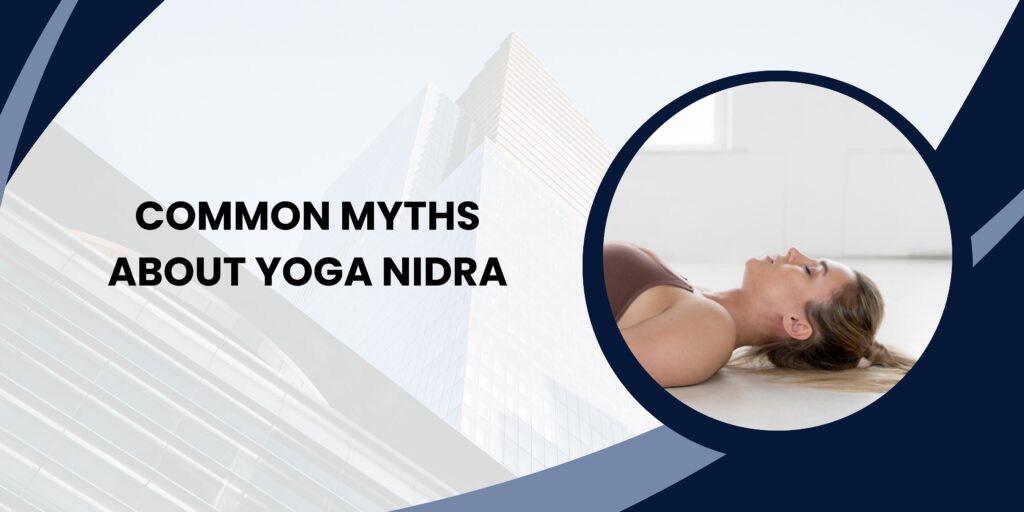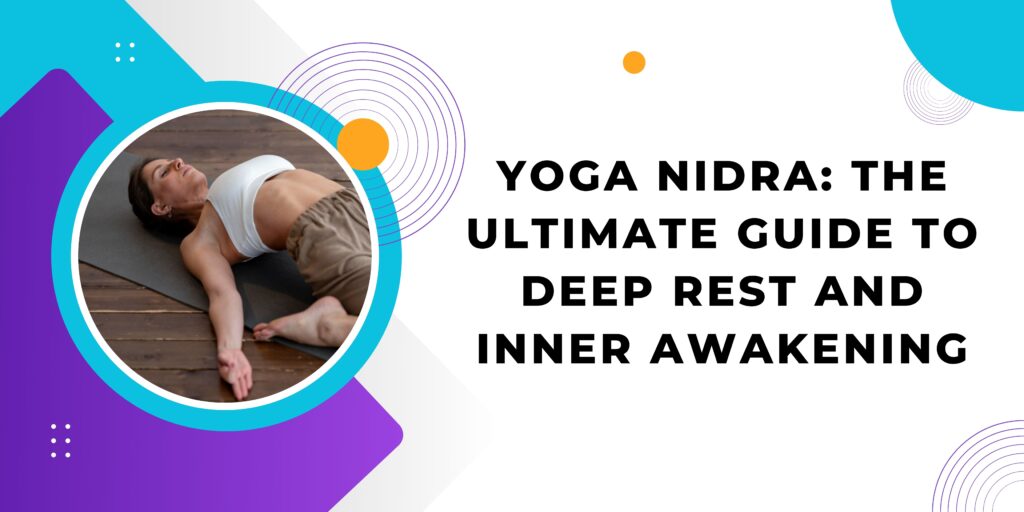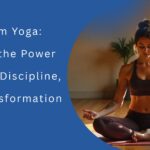Imagine accessing the deepest levels of relaxation while remaining completely conscious. That’s the magic of Yoga Nidra—a powerful yet gentle practice that offers profound mental, emotional, and physical restoration. Known as “yogic sleep,” This Yoga is not just another wellness trend. It’s a science-backed technique that has been transforming lives by reducing stress, improving sleep, and enhancing overall well-being.
If you’re overwhelmed by anxiety, struggling with insomnia, or simply searching for a way to reconnect with your inner calm, this guide will show you how this Yoga can help. Whether you’re a beginner or a seasoned yogi, understanding and incorporating this Yoga into your life could be the self-care revolution you’ve been waiting for.
Yoga Nidra is also known as “yogic sleep,” is a guided meditation technique that leads to a profound state of relaxation, akin to sleep but with conscious awareness. Typically practiced while lying in Shavasana (corpse pose), it blends mental visualization with a specific posture. This practice is known to deeply relax the body and mind, reduce stress, and increase openness to personal intentions or affirmations
Table of Contents
Understanding Yoga Nidra
What Is Yoga Nidra?
Yoga Nidra (pronounced yoh-gah nee-drah) is a guided meditation technique that takes you into a state between wakefulness and sleep. Unlike regular meditation where you sit upright and concentrate, this Yoga is practiced lying down in a restful position. It systematically guides your awareness through body, breath, and mental imagery, allowing the mind to quiet while the body enters a deep state of healing rest.
Yoga Nidra vs. Meditation
While both practices are rooted in mindfulness, This Yoga differs in its structured process and passive approach. Meditation often requires focused attention or control over thoughts, but this Yoga gently walks you into a trance-like state without effort. Many people find it easier, especially beginners who struggle with traditional meditation.
How Does It Work?
Yoga Nidra operates by gradually shifting your brain waves from the active beta state to the deeply relaxed delta state, the same state reached during deep sleep. This shift allows your body to release tension and your subconscious mind to become more accessible, making it a powerful tool for emotional healing, stress relief, and behavioral change.
| Section | Key Points |
| What is Yoga Nidra? | A guided meditation practice inducing deep relaxation between wakefulness and sleep. |
| Yoga Nidra vs Meditation | Yoga Nidra is passive and guided while meditation often requires active mental focus. |
| Benefits of Yoga Nidra | -Stress relief – Better sleep – Emotional healing – Mindfulness – Physical health |
| How to Practice | Lie down in a quiet space, use guided sessions or scripts, set intentions, and follow structured steps. |
| Scientific Backing | Supported by research for anxiety reduction, PTSD therapy, and improved brainwave activity. |
| Who Can Practice? | Suitable for all: beginners, professionals, trauma survivors, elderly, and those with chronic issues. |
| Common Myths | Not just a nap, not only for spiritual people, and it is considered a legitimate yoga practice. |
| Getting Started | Use online platforms (e.g., Insight Timer, YouTube), find certified guides, or use free scripts. |
| Tips for Deeper Practice | Journal after sessions, create a consistent routine, and combine with restorative yoga or pranayama. |
Top Benefits of Practicing This Yoga
1. Deep Relaxation and Stress Relief
Stress is often stored in the body—tight shoulders, clenched jaws, racing thoughts. Yoga Nidra for stress activates the parasympathetic nervous system (rest-and-digest mode), helping release deep physical and mental tension. Just one 30-minute session can feel like hours of sleep, offering instant calm.
2. Improved Sleep and Insomnia Relief
Struggling with sleepless nights? This Yoga for sleep helps calm a restless mind and prepare the body for true rest. Regular practice promotes melatonin production and resets your circadian rhythm. In fact, it’s so effective that it’s often used as a non-medical treatment for insomnia.
3. Emotional Healing and Mental Clarity
This Yoga allows suppressed emotions to rise in a safe, nonjudgmental way. By accessing the subconscious, you can release trauma, dissolve limiting beliefs, and develop emotional resilience. It’s increasingly used in therapy for anxiety, depression, and PTSD.
4. Enhanced Mindfulness and Inner Awareness
Each session strengthens the connection to your inner world. You become more aware of your thoughts, reactions, and patterns. Over time, this builds self-understanding and mindful living—qualities essential for peace of mind.
5. Physical Health and Nervous System Balance
Chronic stress impacts digestion, immunity, and heart health. By lowering cortisol levels and promoting vagal tone, this Yoga supports optimal functioning of all bodily systems. It’s particularly helpful for people with autoimmune disorders, hypertension, and fatigue syndromes.
How to Practice
Creating the Right Environment
To get the most from your Yoga practice, choose a quiet, dimly lit space where you can lie down comfortably. Use a yoga mat, blanket, or even your bed. Add an eye mask or pillow under your knees to enhance comfort.
Guided Sessions vs. Self-Practice
Beginners usually benefit from guided this Yoga recordings or scripts, which walk you through each stage of the process. As you gain experience, you might start crafting your own sessions based on personal needs or intentions.
Best Time to Practice Yoga Nidra
While this Yoga can be practiced anytime, many prefer early morning for a focused start or before bedtime to wind down. Practicing after yoga or a light meal also works well. Consistency matters more than timing.
The Structure of a Session
Most Yoga Nidra sessions follow this sequence:
- Setting an intention (Sankalpa)
- Body scan (rotation of consciousness)
- Breath awareness
- Visualization
- Return to wakefulness
Each stage serves a purpose, gradually drawing you into deeper relaxation and reprogramming the subconscious.
Scientific Research on Yoga Nidra
Yoga Nidra isn’t just anecdotal—it’s backed by science. Research from institutions like the NIH and Harvard has shown its effectiveness in:
- Lowering anxiety and depression symptoms
- Regulating blood pressure and heart rate
- Improving brainwave coherence
- Enhancing focus and creativity
Veterans with PTSD, cancer patients, and students facing academic stress have all reported measurable improvements through regular Yoga practice.
Who Can Benefit from Yoga Nidra?
The beauty of Yoga Nidra is its universal accessibility:
- Beginners who find meditation difficult
- Busy professionals needing stress relief
- Students managing performance anxiety
- Trauma survivors seeking gentle healing
- Elderly and chronically ill who can’t do active yoga
No flexibility, strength, or prior experience is needed.
Read more: Discover the Perfect Yoga Studio for Your Mind, Body & Soul
Read more: Chair Yoga: A Gentle Path to Strength, Flexibility, and Stress Relief at Any Age

Common Myths About Yoga Nidra
“It’s Just a Nap”
While you may fall asleep during the practice, It is a conscious journey into deep relaxation—not unconscious sleep.
“You Have to Be Spiritual”
This Yoga is for everyone, regardless of beliefs. While it has roots in yogic tradition, its benefits are psychological and physiological.
“It’s Not Real Yoga”
Yoga isn’t just movement—it’s about union and inner peace. This Yoga is a powerful limb of this path, emphasizing mental stillness and self-awareness.
Getting Started with Yoga Nidra
Find a Qualified Guide
Look for certified Yoga teachers with experience in trauma-informed or therapeutic practices. Credentials from iRest, Amrit Method, or Yoga Alliance are a good sign.
Best Online Resources
Top platforms include:
- Insight Timer (free Yoga Nidra sessions)
- YouTube (look for “Yoga Nidra for sleep” or “Yoga Nidra meditation”)
- iRest.org (military-approved clinical Yoga Nidra)
- Apps like Calm, Headspace, and Aura
Free Scripts and Downloads
If you prefer a more DIY approach, search for “Yoga Nidra script for relaxation” or “free Yoga Nidra PDF.” Many instructors also offer downloadable MP3s.
Tips for Deepening Your Yoga Practice
- Journal after each session to reflect and record insights.
- Set a clear intention (Sankalpa) at the beginning of each practice.
- Combine with restorative yoga or gentle pranayama for a full-body reset.
- Stick to a schedule—even 10 minutes a day can yield benefits.
- Be patient—some benefits are instant, others unfold over time.
Conclusion: Why You Should Try Yoga Nidra Today
In a world that celebrates doing, this Yoga invites us to simply be. It offers a rare chance to recharge, release, and realign—without the struggle. Whether you’re battling burnout, seeking better sleep, or longing for emotional balance, Yoga holds the key to effortless transformation.
This isn’t just another wellness practice. It’s a return to your natural state of peace. So, find a quiet corner, press play on a guided meditation, and let this Yoga carry you to a place of rest and renewal you may have forgotten existed.
FAQ:
Q. What is Yoga Nidra and how is it different from meditation?
Ans: Yoga Nidra, often called “yogic sleep,” is a guided meditation technique that brings you into a deep state of relaxation between wakefulness and sleep. Unlike traditional meditation, where you usually sit and concentrate, this Yoga is practiced lying down and focuses on passive awareness. It guides you through body scans, breath awareness, and visualizations, making it easier for beginners and those who struggle with quieting the mind.
Q. What are the benefits of Yoga Nidra?
Ans: The benefits of Yoga Nidra include:
• Deep relaxation and stress relief
• Improved sleep and relief from insomnia
• Emotional healing and mental clarity
• Enhanced mindfulness and inner awareness
• Support for physical health and nervous system balance
It is also used therapeutically for managing anxiety, depression, PTSD, and chronic pain.
Q. Can Yoga Nidra help with sleep problems and insomnia?
Ans: Yes, this Yoga for sleep is one of the most effective natural methods for improving sleep quality. The practice helps calm the nervous system, regulate melatonin, and guide the body into a rest-and-digest state. Many people report falling asleep faster and staying asleep longer after practicing this Yoga regularly.
Q. How often should I practice Yoga Nidra for best results?
Ans: For optimal results, practice this Yoga meditation at least 3–4 times a week. However, even daily sessions of just 20–30 minutes can bring noticeable improvements in sleep, stress levels, and emotional balance. Consistency is key—choose a time that fits your schedule and stick with it.
Q. Is Yoga Nidra suitable for beginners or people with no yoga experience?
Ans: Absolutely. this Yoga is beginner-friendly and does not require any physical movement, flexibility, or prior yoga experience. Since it’s practiced lying down, it’s accessible to people of all ages, fitness levels, and health conditions—including those recovering from illness or trauma.
Q. What happens if you do yoga nidra every day?
Ans: Reducing Anxiety and Stress Levels
It’s helps quiet the mind and restore balance to the nervous system. it encourages profound rest and relaxation that goes beyond traditional meditation techniques, soothing the nervous system and resulting in reduced stress and improved overall well-being.
Q. What are the 8 stages of yoga nidra?
Ans: Yoga Nidra, or yogic sleep, is a guided relaxation technique made up of eight distinct stages that promote deep rest and mental clarity. These stages include:
1. Settling or initial relaxation,
2. Setting an intention (Sankalpa),
3. Rotation of consciousness,
4. Awareness of the breath,
5. Sensory perception,
6. Visualization,
7. Repetition of the Sankalpa, and
8. Externalization.
Q. Can I do yoga nidra in bed?
Ans: This Yoga is practiced entirely in a state of complete relaxation, specifically in the Corpse Pose. This pose involves lying flat on your back and can be done on the floor, in bed, or anywhere you feel fully at ease.
Q. What are the disadvantages of yoga nidra?
Ans: This Yoga may pose risks in certain situations. It might not be appropriate for individuals prone to delusions or hallucinations, including those with PTSD, schizophrenia, or other mental health disorders, as well as people taking specific medications.
We use third-party videos and images on https://yogavidhi.com/ for educational and illustrative purposes. All rights belong to their respective owners. No copyright infringement is intended.



